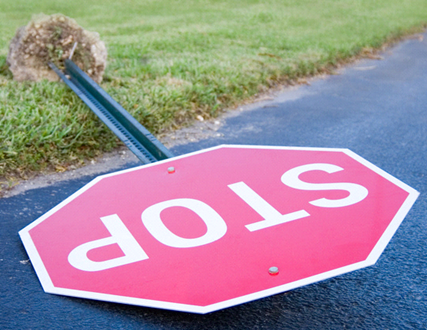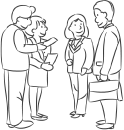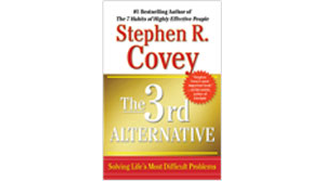Learned Helplessness: a recipe for sustainability INACTION?
Back in the 1960s, psychology researcher Martin Seligman and his team discovered how to create helplessness and passivity – first in animals and later in humans. Some sustainability campaigners could learn an important lesson from his research about how to present their message so it generates action rather than helplessness.
 In this research, Seligman and his team set up a situation where their subjects came to believe that they had no control over a given set of circumstances. They found that subjects who learned that they were helpless became habitually passive, despite later being put into situations where they could take action.
In this research, Seligman and his team set up a situation where their subjects came to believe that they had no control over a given set of circumstances. They found that subjects who learned that they were helpless became habitually passive, despite later being put into situations where they could take action.
(Seligman went on to become the founder of Positive Psychology and best-selling author of the books Authentic Happiness and Learned Optimism.)
What does it take to teach helplessness?
What Seligman discovered was that you can teach someone helplessness by teaching them just three things. You do it by teaching them that:
- The problem is permanent;
- The problem is pervasive; and
- The problem is personal.
Permanent is about time – the belief that failures or bad events will persist, will always be there to affect their lives. Permanent explanations for bad events produce long-lasting helplessness.
Pervasive is about space – that the explanation for failures or bad events are universal and global. Universal explanations for bad events produce helplessness.
Personalization is about taking on blame – taking on the explanation that the individual is responsible due to their personal characteristics.
A 3-P health check for your sustainability messages…
How many sustainability messages have you seen that try to generate action by saying things like:
- Catastrophe is looming and it’s unavoidable?
- Governments and big business aren’t taking action?
- Greedy lazy consumers are to blame?
Based on an understanding of learned helplessness, what impact could such messages actually be having? How much potential do they have to generate positive, strategic action? Could they risk contributing to learned helplessness (increasing passivity and inaction)?
How else could you communicate?
After realising that helplessness was learned, Seligman and his colleagues moved on to research how to generate optimism. They built on the work of psychologist Albert Ellis, developing his ABC (Adversity /Belief /Consequences) model to develop a process for learning to create optimism and action in the face of adversity.
They found that they could teach people to:
- Identify a situation of Adversity.
- Identify the underlying Belief about the Adversity.
- Identify the Consequences (fear, depression, inaction) of holding that belief.
- Learn to Dispute that Belief.
- Learn to evaluate the Energization possible from debating the belief.
Disputing ‘the awful truth’…
Seligman found that by learning to dispute the beliefs that follow adversity, we can change our reaction from dejection and giving up and shift it to activity and optimism. To be convincing in disputing your beliefs, he identified 4 important strategies:
- Evidence – searching for evidence that your belief that is factually incorrect. For example, you can disprove “business isn’t doing anything” by visiting Sustainia’s current Top 100.
- Alternatives – finding alternative explanations for the adverse event. For example, is the real issue “greedy consumers” – or is it old-fashioned linear thinking that’s in the process of being changed. (See The Blue Economy or The Circular Economy for more about developments in ‘the next industrial revolution’ foretold in the book Natural Capitalism.)
- Implications – evaluating the implications of your belief, even though you believe it to be correct. How likely are the awful implications of your belief “the government isn’t doing enough so it will all be terrible” – when the majority of environmental impacts are generated by the private sector, not by government.
- Usefulness – sometimes the consequences of holding a belief matter more than the truth of the belief. Is the belief destructive? Is it useful for you to think about the belief right now? If your belief immobilizes you, how can you change the situation in the future?
(Full details of disputing, distraction and other strategies for generating positive action are documented in Chapter 12 of the book Learned Optimism.)
Learned helplessness and sustainability…
To me there are a couple of key applications for smart sustainability practitioners:
- Ensure that your message to others isn’t unwittingly generating helplessness rather than action.
- If you’re finding yourself struggling and overwhelmed, learn how to apply ABCDE for your own personal wellbeing.
As documented in a previous post, the design work for a regenerative future was done decades ago and smart business and social entrepreneurs have been proving it works ever since.
This doesn’t mean that we shouldn’t call for action – it does suggest that if all we can do in 2013 is bemoan the terrible consequences of “business / government / consumer inaction” then it could be that we’re part of the problem, not part of the solution.
Don’t just communicate harder – communicate WELL..
One of my ‘ah-ha’ moments early in my sustainability journey was Alan Atkisson’s description of the role of Change Agents in innovation diffusion.
Writing in the book Believing Cassandra: An Optimist Looks at a Pessimist’s World, he describe change agents as “people who actively and effectively promote new ideas… Change Agents understand that convincing people … depends more on communication skills than (merely) compelling evidence.”
Effective communicate is a learnable craft. Study and practice the how of successful communication, otherwise what you know may not matter all that much.





